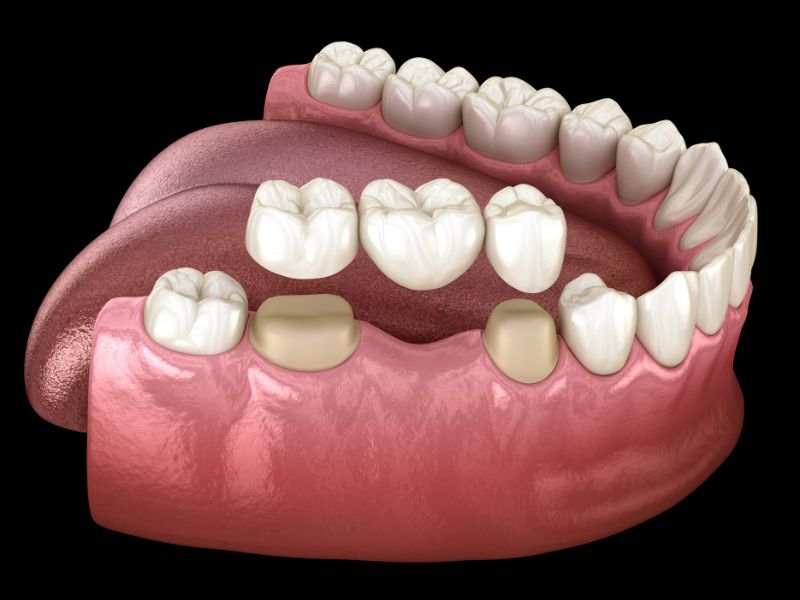Bridges: A Quiet Restoration That Speaks Volumes
Bridges: A Quiet Restoration That Speaks Volumes
There is something unmistakably jarring about an empty space in one’s smile. The absence of a tooth—often dismissed as merely cosmetic—can subtly, and then significantly, alter the harmony of the mouth. Chewing changes. Speech shifts. Even the structure of the face starts to change as the bone underneath it fades without the stimulation that a natural root used to give it.
For a long time, dental bridges have been a way to fix this slow unraveling. A well-made bridge not only fills the gap, but it also brings things back into balance. It brings back symmetry. And for many patients, it does so with minimal interruption, relying on time-tested principles refined by modern technique.
When a Tooth Is Lost, What Else Goes Missing?
Tooth loss rarely exists in isolation. It triggers a slow domino effect:
- Adjacent teeth begin to tip toward the vacant space.
- The opposing tooth may erupt further than it should, searching for contact that’s no longer there.
- These shifts can distort bite alignment, increase strain on the jaw, and introduce wear in places where it doesn't belong.
Perhaps more quietly, the jawbone itself begins to withdraw. Without the daily pressure once applied by the root during chewing, the bone no longer receives the signal to maintain its volume. Over time, the ridge sinks. The smile line shifts. And what once felt like a small inconvenience begins to shape the entire lower face.
These changes unfold gradually—often without discomfort—but their effects are lasting. A well-planned bridge, introduced early, can halt that process. It’s more than a placeholder. It’s a prosthetic built to preserve the architecture of the mouth.
How Bridges Do Their Work
A dental bridge relies on neighboring teeth—or sometimes implants—for support. These are the “abutments.” Between them sits the prosthetic tooth, called a “pontic,” designed to match the surrounding dentition in form, color, and proportion. In the right hands, the final result is not only functional but remarkably discreet. Patients often forget, with time, which tooth was ever missing.
Several designs exist, each suited to different clinical scenarios:
- Traditional bridges – use crowns on both sides to hold the replacement tooth in place.
- Cantilever bridges – use only one adjacent tooth for support if it is structurally sound.
- Bonded bridges – use a thin frame to hold the prosthetic in place without full crowns, preserving enamel.
- Implant-supported bridges – attach directly to the bone and are ideal when several teeth are missing.
Choosing the right type depends on the health of neighboring teeth, the amount of bone available, and the patient’s long-term clinical, functional, or aesthetic goals.
Craftsmanship at the Core
The process begins with evaluation, but the artistry unfolds in the details. If natural teeth will serve as anchors, they are carefully reshaped to receive custom-fitted crowns. Impressions—or increasingly, digital scans—guide the fabrication of the final restoration.
Much depends on materials. For visible areas, all-ceramic options like lithium disilicate or monolithic zirconia combine strength with natural translucency. For areas under stronger biting forces, reinforced ceramics or porcelain-fused-to-metal frameworks may be better.
Once the bridge is ready, it is checked for fit, contact, and occlusion—often in fractions of millimeters—before being permanently placed.
What Time Reveals
When properly maintained, bridges can remain functional and stable for a decade or longer—often much longer. Longevity depends on consistent oral hygiene and maintenance:
- Brush and floss daily, especially around the edges and under the pontic.
- Schedule regular cleanings to remove plaque in hard-to-reach places.
- Get periodic dental checkups to ensure supporting structures remain healthy.
Complications are uncommon, but supporting teeth must remain strong. If they are damaged by decay or fracture, the bridge may fail. Patients with severe periodontal disease, uncontrolled diabetes, or significant bone loss may not be ideal candidates—in such cases, implant therapy may be suggested.
Still, for many, a bridge strikes the right balance: predictable, non-surgical, and discreet. It restores what was lost—functionally and aesthetically—without calling attention to itself.
To explore whether a bridge is appropriate for your individual needs, we invite you to schedule a consultation. Call (509) 796-0885 to speak with our prosthodontic team.



